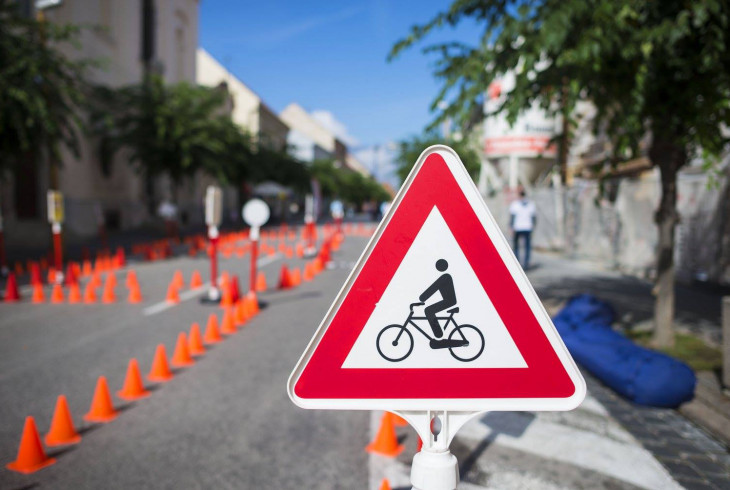

New
Trnava is making progress in creating a shared public space for cyclists and pedestrians
22. 11. 2021
![]() Mobility
Mobility
The last in a series of workshops aimed at sharing experiences and good practices in implementing sustainable mobility was devoted to examples from the Trnava region. In this region, but also throughout Slovakia, since 1998, the number of residents moving from city centers to the periphery has been increasing. This phenomenon is called suburbanization and represents a relatively complex problem in terms of the transport serviceability of the area by public transport.

While in the city center or in a housing estate, 10,000 residents live on the same area, in the suburbs in a sprawling family development, this can be 10 times less. In such an area, it is much more difficult to plan a public transport route in such a way as to ensure its smoothness and time efficiency. However, the city and its surroundings are a coherent space and this situation needs to be responded to.
If we can prepare the conditions for people in public bus transport in such a way as to attract passengers from ICT (individual car transport), we will also improve the conditions for current users. The solution is to optimize transport performance, use minibuses, increase the reliability of train transport, clear line management, zone service, clock nodes, carefree customers (they do not deal with travel documents, report the destination stop to the driver, use additional equipment such as wifi - etc.). These principles are also followed in the Trnava Self-Governing Region when introducing zoning for suburban bus transport. The "Bus on Call" service, which was introduced in some more remote villages, is also worth mentioning.
The city of Trnava itself is not only friendly to cyclists, but also supports pedestrian mobility - where there are pedestrians, the city prospers. They work with this “mantra” when creating public spaces in the city center, but also when planning housing estates and inner blocks. An important aspect of planning is the involvement of residents in the creation of public spaces. Every resident of the city is an expert on the place where they live, because they know the environment, they know where the sidewalk is sagging, where it is still damp, or where it is unpleasantly windy in October. All this is very valuable information for architects and urban planners, with whom they continue to work when creating attractive public spaces.
Trnava, as a “city ideal for cyclists”, has also joined the CWA initiative – cycling without age restrictions. Since 2012, this movement has spread to 51 countries. The goal is to return people from social service homes back to society and to bicycles, taking into account their reduced mobility – so that they can “feel the wind in their hair again”. The project was presented by Petra Vráblová from the Healthy City of Trnava department, highlighting aspects such as slowness, consideration, storytelling and building bridges between generations. Rickshaw drivers, who take seniors on shared cycle trips at a set time along an agreed route, are mainly high school and university students. Trnava is clearly a city where emphasis is placed on building cycling infrastructure, supporting sustainable mobility, supporting seniors, intergenerational dialogue and building good interpersonal relationships.
The recording of the workshop is available on our YouTube channel: https://www.youtube.com/watch?v=KfLtL_RO0dA











